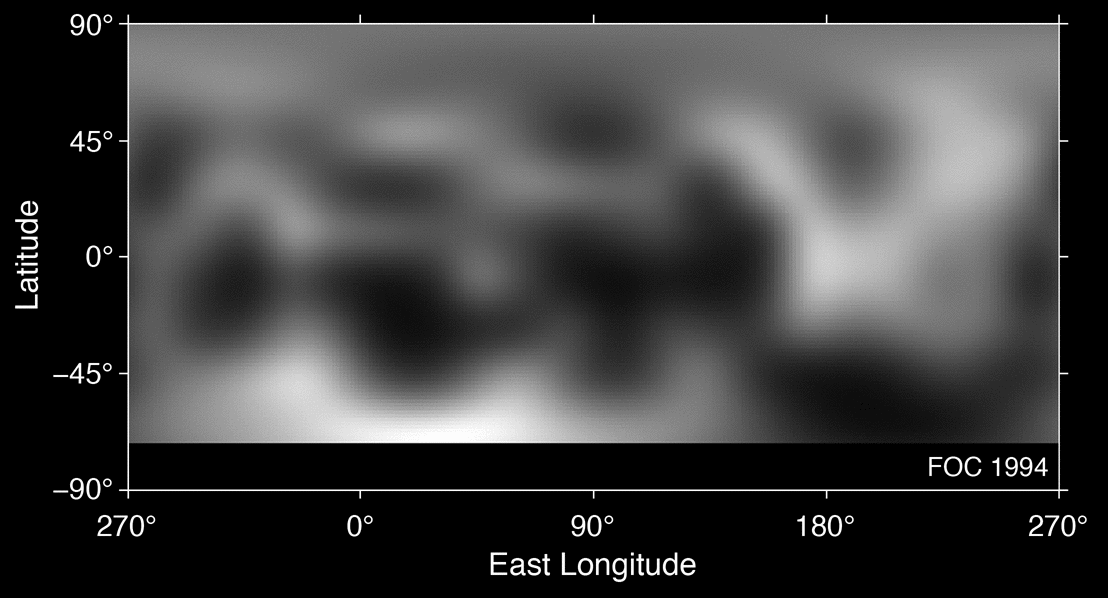Emily Lakdawalla • Feb 04, 2010
New maps of Pluto show pretty amazing amounts of surface change
I just posted my writeup of today's press briefing on a new map of Pluto produced from Hubble images. The main conclusion was that Pluto has shown an astonishing amount of changes across its surface between 1994 and 2002 -- more, in fact, than any other solid surface in the solar system. An interesting perspective on the announcement, which concerned four years of computational work done by Marc Buie, was provided by Mike Brown. Buie said that the view of Pluto that we have from his new maps was comparable in resolution to our naked-eye view of the Moon. Brown pointed out how strange it would be if the Moon appeared to change in our sky as much as Pluto did in the six years spanning the two sets of observations:

One thing I didn't mention in the news writeup was that Mike Brown, who goes by the Twitter handle "@plutokiller," was actually Tweeting away during the parts of the press briefing when he wasn't talking. (Tweeting while talking is something even he doesn't seem to be able to do -- and yes, that's a challenge, Mike.) So I Tweeted a question to him, about what question he thought I should ask at the briefing. He responded, recommending I ask why Pluto's northern hemisphere brightened. It was a question that apparently has stumped both Buie and Brown, and Buie's response to it provided one of the more imaginatively arresting phrases of the briefing: he speculated that as nitrogen sublimates from the northern hemisphere, it leaves behind a landscape of "fairy castle" spires of remnant nitrogen ice.
Coool! I can't wait until New Horizons gets there! Only five more years!
Support our core enterprises
Your support powers our mission to explore worlds, find life, and defend Earth. You make all the difference when you make a gift. Give today!
Donate

 Explore Worlds
Explore Worlds Find Life
Find Life Defend Earth
Defend Earth

